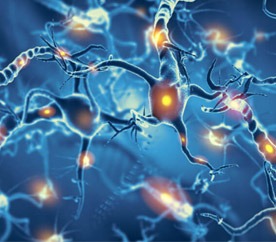Neurological Conditions
Stroke
Stroke rehabilitation supports in your attempt to regain as much freedom and quality of living as you can. After a stroke, rehabilitation can benefit you mentally, socially, emotionally, and physically. It supports your return to normal well-being, functioning, and health.
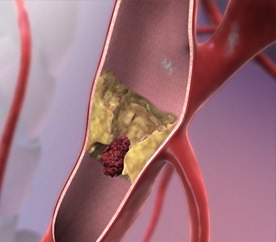
Indications /Manifestations
- A face, arm, or leg that is paralyzed, weak, or numb. Usually one side of the body.
- A stroke may be indicated if one arm starts to sag or One may attempt to lift both arms above the head
- When attempting to smile one side of the mouth may also droop.
- Issues with one or both of the person’s eyes which may suddenly become blacked out or blurry or they might see two things.
- A sudden severe headache, nausea, feeling dizzy.
- Having difficulty like balance or coordination issues while walking.
OT Intervention
Occupational Therapists (OTs) can provide training for
- Constraint-Induced Movement Therapy (CIMT)
- Inhibition of unwanted muscle patterns and Facilitation of automatic reactions such as righting, equilibrium and protective extension. These principles are achieved by special techniques of handling and positioning ( e.g. weight-bearing through an affected upper limb- i.e. a position of extension) in order to: 1. Normalize muscle tone; 2. Elicit the righting and equilibrium responses automatically; 3. Gradually introduce independent voluntary control.
- Graded Repetitive Arm Supplementary Program (GRASP)
- Strengthening (Therapeutic) exercises
- Repetitive Task Practice
- Mental Practice
- Mirror Therapy
- Upper Limb Therapy
- Interventions for sensory impairment
- Virtual Reality
- Compensatory strategies
- Modified equipment aids
- Adapting task, changing /breaking down steps of each task
- Helping the patients to achieve independent is activities of Daily living and Instrumental ADL skills
Traumatic Brain Injury (TBI)
Traumatic brain damage typically arises from a forceful hit or sudden movement to the head or body resulting from violent incidents, sports-related injuries, automobile accidents, explosive blasts, falls, and military injuries. Traumatic brain injury can also result from an object piercing the brain, such as a bullet or a broken cranium.

Indications /Manifestation
- Confusion that lasts for several minutes to hours
- Headache that lasts for a long time or gets worse
- Frequent nausea or vomiting
- The symptoms may include convulsions or seizures
- Dilation of one or both pupils
- Clear fluids draining from the nose or ears
- Difficulty waking up from sleep
- Weakness or numbness in the fingers and toes
- Loss of coordination, profound confusion
- Agitation, aggressive behaviour or other unusual behaviour, slurred speech, coma, and other consciousness disorders
OT Intervention
Occupational Therapists (OTs) can provide guidance in
- Arousal and Alertness for auditory stimulation. Particularly with familiar voice.
- In particular for Improvement of people in a Coma or Persistent Vegetative State
- Enhancing cognitive and other abilities like
- Gaming, memory sketching
- Using cognitive training applications
- Coping mechanisms, social skills
- Independent living abilities
- Job rehabilitation
- Virtual Reality
- Compensatory strategies
- Modified equipment aids
- Adapting task, changing /breaking down steps of each task
- Helping the patients to achieve independent is activities of Daily living and Instrumental ADL skills like Dressing, Cooking etc.
Spinal Cord Injury
An injury to the spinal cord is known as a spinal cord injury. The brain and all of your body’s nerves are connected by this bundle of nerve fibers. Sensory impulses and the ability to govern muscle action can be disrupted by damage to your spinal cord.

Indications /Manifestation
- Severe pressure in the head , neck , or back or back discomfort
- Weakness loss of control , or incardinate in any body part
- Hands, fingers, feet, or toes those are numb, tingly, or devoid of feeling
- Inability to control bowel or bladder
- Issues with walking and balance
- Breathing problems following an injury
OT Intervention
Occupational Therapists (OTs) can provide instructions for
- Handling transfers, positioning and self-care
- Handling modified tools like eating utensils, sock assistant, Wash gloves, commodes and bath chairs
- Activities to enhance arm and hand functions
- Utilizing a wheelchair that is powered or manual and teaching how to use
- Learning daily activities like
- Meal preparation and household chores with assistive devices
- Improving mobility skills
- Enhancing fine motor control abilities for hobbies self-care and communication
- Activities to increase hand, wrist, elbow and shoulder strength to perform important tasks
Multiple Sclerosis (MS)
Multiple Sclerosis is an autoimmune disease that may affect the brain and spinal cord. It can cause a variety of symptoms, such as issues with vision, sensation, balance, arm or leg movement.

Indications / Manifestation
The symptoms of MS vary widely from person to person and can affect any part of the body.
- Fatigue
- Difficulty walking
- Vision problems such as blurred vision
- Problems controlling the bladder
- Numbness or tingling in different parts of the body
- Muscle stiffness and spasms
- Problems with balance and co-ordination
- Problems with thinking learning and planning
OT Intervention
Occupational Therapists (OTs) can provide guidance in
- Managing pain, using manual therapy techniques.
- Strengthening and stretching muscles.
- Making alterations to the home and preventing falls
- Helping with everyday tasks like cooking, cleaning, and dressing
- Evaluating your house and workplace to find any risks and make improvements
- Budgeting, scheduling, and daily planning
- Fine and gross motor skills, visual compensation, and cognitive abilities
- Use of special equipment or assistive devices such as orthotics, braces or wheelchairs.
- Stress management techniques.
Parkinson’s Disease
A degenerative brain illness associated with aging, Parkinson’s disease results in the deterioration of certain brain regions. While hereditary, the majority of instances occur for unclear causes. Although there is no known cure for the illness, there are numerous therapeutic alternatives.
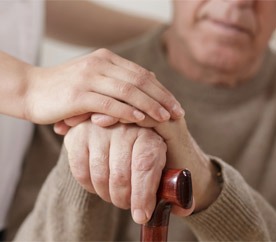
Indications /Manifestation
- Slowed movements
- Tremor while muscles are at rest
- Rigidity or stiffness
- Unstable posture or walking gait
- Blinking less often than usual
- Cramped or small handwriting
- Drooling, trouble swallowing
- Trouble thinking and focusing
- Sleep problems and depression
OT Intervention
Occupational Therapists (OTs) can provide instructions for
- Handwriting assistance
- Arm and hand treatment
- Information on home modifications
- Driver examination and vehicle modifications
- Cooking and homemaking adaptations
- Eating and dinnerware adaptations
- Aids and equipment’s for dressing, grooming and toilet and bathtub.
- Using an electric or manual wheel chair
- Modification for workspace adjustments for computers
- Developing leisure skills and tips to maximize energy.
Amyotrophic lateral sclerosis (ALS)
A disease of the neurological system that damages nerve cells in the brain and spinal cord is called amyotrophic lateral sclerosis or ALS. Loss of muscular control is a result of ALS. Over time, the illness worsens.
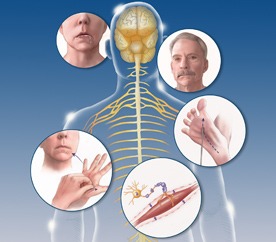
Indications / Manifestation
Each person experiences ALS symptoms differently.
- Muscle weakness that spreads and deteriorates over time
- Difficulty walking or performing daily tasks.
- Stumbling and tumbling.
- Weakness in the feet, ankles, or legs.
- Hand clumsiness or weakness.
- Difficulty swallowing or speaking
- Weakness linked to spasms and twitches in the tongue, arms, and shoulders.
- Yawning, smiling, or crying too soon.
- Modifications in thought or behaviour.
OT Intervention
- Occupational Therapists (OTs) can provide training in use of aids and modifications for
- Walking
- Bathing and grooming
- Dressing
- Eating
- Occupational Therapists (OTs) can educate patient’s primary caretakers for
- Proper dressing
- Transferring and toileting practices
- Occupational Therapists (OTs) can assist in
- Work out to maintain muscle strength and flexibility
Brain tumour/ Glioma/ Brain cancer
Because of their high incidence of cognitive deterioration, brain tumours are receiving more attention in cancer rehabilitation. Individuals suffering from brain tumours commonly experience emotional issues, motor dysfunction, and cognitive decline. Dysphagia, headaches, and seizures are among the other frequent medical issues.
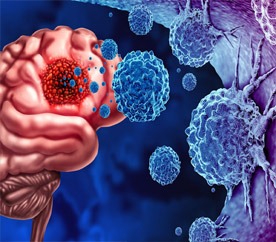
Indications / Manifestation
- Cognitive dysfunction like
- Disorders related to memory, communication
- Mood, anxiety, depressive disorder and impulse control
- Pain, headache, seizures, and other neuropathic pain
- Motor malfunction, dysphagia and fatigue
- Dysfunction of the auditory system
- Visual disturbance and sensory degradation
OT Intervention
- Improvement of functional disorders of the musculoskeletal system
- Determining of function-related treatment goals
- Reducing post-surgical problems (scars discomfort, seroma)
- Reducing symptoms after radiotherapy (cystitis, proctitis)
- Reducing hormone deficiency symptoms (vasomotor reactions, osteoporosis)
- Reducing symptoms after cytostatic chemotherapy (polyneuropathy)
- Reduction of fatigue
- Reducing pain
- Assessing sensory process
- Improving balance
- Maintaining/increasing independence of daily life
- Improvement of cognitive performance
- Activity Performance and Participation
- Increasing Gross & Fine Motor Skills
- Coping with stress and anxiety depressive states and relaxation
- Supporting/developing Quality of Life
- Family or peer problems
- Reduction of insomnia
- Construction of meaning and objective perspectives
- Improving of school function
Alzheimer’s Disease
In terms of dementia, Alzheimer’s disease is the most prominent. This is a disease which develops, starting with slight memory loss and eventually ending with loss of the capacity to respond to surroundings and carry on a conversation. Alzheimer’s disease attacks the brain regions responsible for memory, thinking, and language.
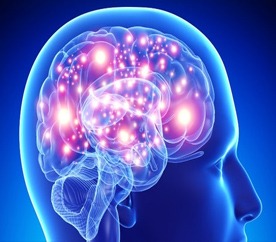
Indications / Manifestation
The primary sign of Alzheimer’s disease is memory loss. Early warning indicators include having trouble recalling previous conversations or occurrences.
- Repeat questions and comments several times.
- Ignore talks, meetings, and occasions.
- Lose things, frequently placing them in unusual places.
- Become lost in areas they used to be familiar with.
- Eventually, you start to forget regular things and family member’s names.
- Find it difficult to express thoughts describes things, or participate in conversations.
- Reasoning and thinking
- Forming conclusions and judgments
- Setting up and carrying out routine duties
- Variations in behaviour and attitude, such as depression, a decrease of interest in hobbies, Social separation, fluctuating moods, mistrust of others, anger or hatred, Sleep routines that change, being lost, losing limits, and misconceptions such as believing something has been taken are some examples of these.
OT Intervention
A person receiving occupational therapy may be able to keep their independence. These include:
- Occupational therapists (OTs) can provide teaching methods for daily skills like
- Eating
- Dressing, Teaching skills
- Taking a shower
- Occupational therapists (OTs) can provide teaching methods for cognitive abilities like
- Planning
- Memory
- Focus and organizing
- Occupational therapists (OTs) can provide training for adaptable equipments like
- Mealtime assistance with adaptable utensils
- Bathroom accessories and handrails
- Visual assistance for dressing like labels on drawers and cupboards
- Increasing household security
- Laying non-slip carpets or grabs rails
- Occupational therapists (OTs) can suggest clearing off surfaces and floors like
- Adding appropriate lighting indoors
- Taking locks off of doors
- Counselling caretakers on how to assist a person with dementia.
Concussion
Concussion can result from a hit or jolt to the head. The damage prevents the brain from functioning properly. Concussion symptoms might go away in less than a day or last for several months.
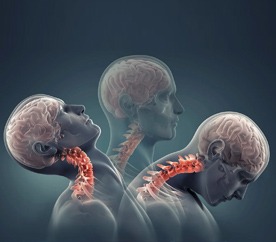
Indications / Manifestation
- Frequent nausea or vomiting.
- A prolonged unconsciousness that lasts more than 30 seconds.
- A continuously worsening headache.
- Blood or fluid dripping from the ears or nostrils.
- Changes in vision or eyesight.
- A constant ringing sensation in the ears.
- Limb aches or weakness.
- Modifications in behaviour, Convulsions or seizures.
- Confusion or mess. One might not be able to identify individuals or locations, for instance.
- Speech alterations, such as slurred speech.
- Significant alterations in mental abilities.
- Modifications in movement patterns, such as difficulty or stumbling.
- Severe head trauma, including bumps and bruises behind the ears or behind the eyes.
OT Intervention
- Occupational Therapists (OTs) can provide guidance for
- Developing a sound sleep schedule
- Learning about energy saving
- Improving cognitive abilities
- Support for mental, behavioural and emotional issues
- Assistance with a gradual return to work, school or sports
- Alternatives to drugs pain treatment
- Enhance visual and cognitive skills
- Driving rehabilitation
Dyspraxia
Another name for dyspraxia is developmental coordination disorder (DCD). Dyspraxia patients struggle with coordination and mobility. While it has no influence on intelligence, it can have an impact on some cognitive abilities and coordination, making it less suitable for activities requiring balance, athletics or learning to drive.

Indications / Manifestation
- Your balance, coordination, and movement
- How you choose new skills, think through problems, and store information both at work and at home
- Your day-to-day living abilities, like getting dressed or cooking
- Your ability to write, type, draw, and hold small objects
- How you behave in social settings
- How you handle your emotions
- Your time management, planning, and organizational skills
OT Intervention
- Occupational Therapists (OTs) can provide training for
- Adaptations to equipment to performs tasks like
- Dressing
- Writing
- Using computer
- Supporting educational staff to help and support the individual in academic setting
- Advice and support for families, friends and parents to support in social environments and home
- Advice for individuals to help manage everyday tasks that they may find difficult
- Risk assessment to evaluate how safe the individual is in their environment
Low Vision
Age-related macular degeneration, diabetes, and glaucoma are some of the most common causes of poor vision. A brain damage, retinal cancer, albinism, or hereditary eye illnesses like retinitis pigmentosa can also cause low vision.
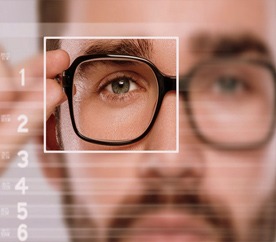
Indications / Manifestation
- Blur or unclear eyesight
- Having double vision
- Sliding into objects or people
- Issues related to balancing or depth awareness
- Photophobia, or intolerance to intense light
- Challenges in understanding and recognizing what is being observed
- Partial loss of visual field
OT Intervention
- Occupational Therapists (OTs) can provide training on
- Information on the eye condition
- Advocacy for resources
- Instruction in problem-solving techniques
- Modification of the environment and unusual viewing habits.
- Use of mainstream and non-optical electrical and optical technologies
- Teaching adaptable ways that make daily tasks easier to complete
Neurological Rehabilitation
- A medically supervised program called neurological rehabilitation, or rehab, is designed to assist people with illnesses, injuries, or disorders affecting the nervous system.
- Neurological rehabilitation generally boosts function, reduces symptoms, and improves the patient's quality of life.
